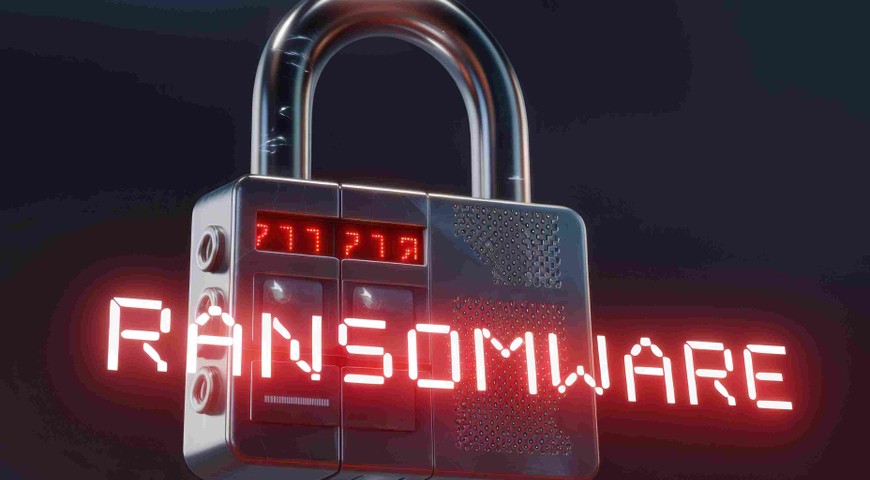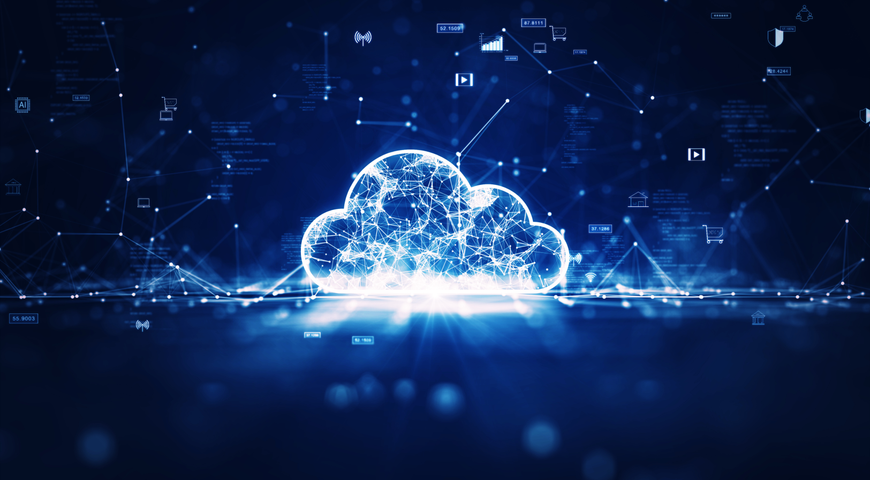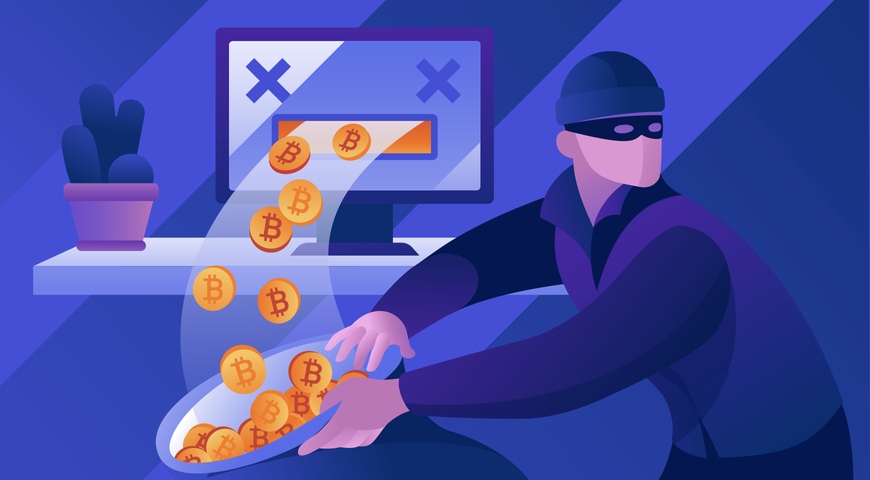
Ransomware attacks are undoubtedly the most damaging cyberthreats today. They can lock up home users' and organizations' databases within minutes, leading to catastrophic consequences, not only financial but also reputational and emotional.
These cyberattacks have doubled after COVID-19 hit the world, and hackers target not only large enterprises and government agencies but also SMBs and home users. Years ago, the landscape was entirely different, where prime targets of ransomware attacks were only high-profit companies. Cybercriminals now use different approaches to get unauthorized access to your endpoints and press the detonation button at the most unexpected moment. Subsequently, you see a screen providing instructions to regain access to your database by paying ransom or losing all of your files for good.
This digital extortion scheme — where attackers lock victims out of their data and demand payment — has become so profitable that it's spawned an entire criminal industry.
In 2024 alone, the Akira ransomware group, which specifically targeted over 350 organizations globally, generated an estimated $42 million in ransom payments, according to a report by Dark Atlas. The method used by cybercriminals is simple yet very effective: they use stolen credentials to infiltrate different networks that rely on basic or single-factor authentication for security. Once they penetrated the victim's devices, they deployed file-encrypting malware, locking up their critical data and demanding a ransom for its release.
This guide explores in detail what ransomware is, which are the most frequent and harmful types of ransomware, how the infection spreads across your devices, and, most importantly, how to protect yourself or your organization's network from becoming the next victim of ruthless cybercriminals. So let's waste no more time and get to work.
What is ransomware?
Users and organizations that fall victim to a ransomware attack face the difficult choice of paying the demanded ransom and regaining access to their files or losing all the information for good. This type of malware is a never-ending growing threat, generating billions of dollars in payments to cybercriminals while causing devastating damage to businesses, home users, and governmental organizations.
Types of ransomware you need to know
Did you know that not all ransomware attacks work the same way? Understanding the distinct types of ransomware is essential for implementing effective defenses to protect your most valuable digital assets—your data. Let's examine these variants in detail.
Crypto ransomware vs. locker ransomware: What's the difference?
Crypto ransomware is, without any doubt, the most common type, which targets your highly important files and documents, with the main goal of encrypting them and restricting access to your data. In this scenario, your system continues to operate, but your files remain locked behind strong encryption. The attackers use a sophisticated encryption key to scramble your data, and they prevent access until you pay the ransom and receive the separate decryption key.
Locker ransomware, as the name suggests, locks you out of your device(s) entirely, meaning that you have no access to your system operations, applications, or files. This type of ransomware attack is designed to prevent users from conducting any operations, creating immediate operational paralysis.
Double extortion ransomware: A growing threat
Ransomware groups like Akira that we mentioned earlier now employ a double-extortion strategy: they not only encrypt your files, but they also steal your sensitive data before encryption and threaten to publish it on dark web marketplaces if you do not pay the demanded ransom. This tactic nullifies the protection that even perfect backups would provide, as you're still vulnerable to data exposure.
Mobile ransomware: How smartphones are being targeted
Nowadays, every person has a smartphone in their pocket; even our kids have one from an early age. This trend made cybercriminals shift their focus to targeting these devices. Mobile ransomware exploits vulnerabilities in our smartphones' operating systems or third-party apps. It installs malicious code (applications) that can lock your screen, encrypt your photos, messages and contact list, or even take control of your camera and microphone. Of course, the main goal is to pay the demanded amount to the cybercriminals to regain access to your cherished and sensitive data.
Ransomware-as-a-Service (RaaS) and the Rise of Cybercrime-as-a-Business
Perhaps most concerning is the rise of Ransomware-as-a-Service (RaaS), which has industrialized cybercrime by making sophisticated attacks accessible to criminals with minimal technical skills. RaaS providers offer complete ransomware packages—including the malware software, encrypted file recovery mechanisms, and even payment platforms—through subscription or profit-sharing models.
How ransomware spreads: Common infection vectors
Every home user and business owner has asked himself how ransomware manages to infiltrate even seemingly well-protected systems. We all want to equip our devices with the best possible ransomware protection, spending hundreds or even thousands of dollars, and still, there is a risk of becoming a victim to threat actors. How is that possible? The truth is that ransomware attacks don't magically appear in your organization's network — they exploit known and unknown software vulnerabilities or use social engineering tactics to step foot on your devices. To clarify things, we will now explore how exactly ransomware spreads.
Phishing emails and malicious attachments
It is well known that the most common entry point for ransomware remains deceptively simple: your email inbox. Ransomware attackers design hyper-convincing emails that pretend to come from trusted sources—your bank, colleagues, delivery companies, and different service providers. Why? Because they know that most of us will immediately open the email and make that one simple mistake of downloading the attached file (invoice or other type of document) or providing personal information.
These messages typically create urgency ("Your account will be suspended" or "Your order cannot be delivered because of missing shipping details"). Once you execute it, the malicious code begins encrypting your files in the background, commonly spreading across accessible network drives before you see a screen with a demand ransom message.
Drive-by downloads from compromised websites
Drive-by downloads occur when you visit malicious websites — sometimes even legitimate sites that have been hacked and can exploit vulnerabilities in your web browser or operating systems. Simply engaging in routine web browsing can lead to infection when these sites exploit vulnerabilities in outdated browsers.
The moment you land on these pages, the ransomware silently downloads and installs without your knowledge or consent. By the time you notice encrypted files on your system, the infection has already spread throughout and encrypted all accessible directories.
Exploiting unpatched software vulnerabilities
One of the biggest mistakes you can make is neglecting to update your operating system and third-party applications. Cybercriminals persistently target outdated systems to exploit software vulnerabilities, gain unauthorized access, and deploy devastating ransomware attacks.
Software vendors constantly release updates to close critical flaws and protect your devices from falling victim to cybercriminals. Never underestimate their importance; keep your systems up to date to improve your security posture and minimize the chance of experiencing that unpleasant feeling of staring at a screen with instructions for paying a ransom.
Remote desktop protocol (RDP) and weak credentials
Remote access tools like RDP have become favorite targets for hackers. By using brute force attacks or purchasing stolen credentials from dark web markets, they gain access to your systems using seemingly legitimate credentials. Once inside, they disable security controls, harvest additional credentials, and deploy ransomware across your organization's network. Many victims never realize their remote access point was the initial breach point until it's too late to regain access without a decryption key.
USB drives and removable media as infection points
Infected USB drives, external hard drives, and even smartphones can introduce ransomware when connected to your computer. Some sophisticated attacks specifically target air-gapped systems (those not connected to the internet) through compromised storage devices and removable media. The ransomware lies dormant until connected to a target system, then activates and begins encrypting files—creating a significant challenge for recovery if proper isolation protocols aren't followed.
Essential ransomware prevention strategies
Ransomware attacks have skyrocketed in the last decade; nobody is immune to these nasty and destructive attacks. However, the good news is that following the below strategies can prevent ransomware attacks and significantly reduce your overall security risk before cybercriminals compromise your systems.
- Email security: Email remains the primary entry point for ransomware attacks. This is why it's crucial to implement strong spam filters capable of identifying early malware indicators. Additionally, conduct regular security awareness training for your employees on detecting phishing attempts, especially those containing Microsoft Office files with embedded macros. This security awareness training should teach them to recognize suspicious emails, avoid unverified links, identify grammar mistakes, and always verify the sender's email address.
- Use threat intelligence to stay ahead: Technology innovation has always been a huge advantage, providing you with different benefits, so you must deploy solutions that use behavioral analysis to identify and automatically block suspicious activities. Effective endpoint management solutions monitor your systems for unusual behaviors that might indicate ransomware before encryption begins. This will strengthen your security posture and help protect your critical data from harmful emerging threats.
- Regularly update used software: Neglecting software updates can have a devastating impact on your business, since cybercriminals specifically target devices using outdated software versions to exploit already known vulnerabilities to grant them access to the endpoints in your network. To prevent such scenarios, implement automated patch and vulnerability management tools that can keep your software (third-party and operating systems) updated to the latest version, prioritizing patches based on their risk severity.
- Use strong, unique passwords and enable MFA: Unique passwords containing special characters, numbers, and lower and uppercase letters can't be cracked easily. Furthermore, multi-factor authentication dramatically reduces your attack surface. So it is highly important to implement strict password policies and manage user permissions carefully in your organization to prevent lateral movement if one account is compromised.
- Disable macros and restrict script execution: Macros in documents often deliver malicious code. Configure systems to disable automatic macro execution and limit script-running capabilities, particularly in web browsers where drive-by downloads occur.
- Limit admin privileges and network access controls: Use a role-based access strategy to restrict administrative rights to employees who need them in their daily activities. Implement network segmentation to isolate critical systems; this way you can effectively limit what ransomware can reach in case of security breaches. Keep in mind to disable Remote Desktop Protocol when not required, as it is frequently targeted by threat actors.
- Secure backup strategies and recovery planning: Strictly follow the gold 3-2-1 backup strategy. What does that mean? Well, keep three copies of your data on two different media, with one stored offline. This strategy ensures you can restore your database under any circumstances. While cloud services offer redundancy, offline backups are crucial for ransomware recovery. Remember to regularly test your backup data to ensure it functions as expected. Every system administrator must develop an effective and flawless cyber incident response plan that includes steps for isolation, assessment, and recovery since that can protect you from paying ransom in case of a successful ransomware attack.
The role of cybersecurity software in ransomware prevention
Without cybersecurity tools, you can't protect your business from ransomware attacks and other malware types that constantly threaten your systems. Your car won't start without fuel, right? Similarly, you can't stop cyberthreats without the right tools.
These solutions can make the difference between business continuity and a devastating breach that leaves you scrambling to recover your data or facing the difficult choice of whether to pay cybercriminals or lose your database forever.
Choosing the right anti-ransomware and antivirus software
When selecting antivirus or anti-malware software, look for solutions that feature machine learning and heuristic analysis capabilities, as these are most effective at identifying malicious software before it executes. These tools should offer real-time protection against file encryption attempts.
The most effective anti-ransomware tools update continuously to keep pace with evolving cyberthreats. For enhanced protection, choose a solution that provides automatic backups, ensuring you won't lose your files under any circumstances.
Benefits of endpoint protection platforms (EPPs)
Endpoint protection platforms have become essential for every successful organization. They consolidate multiple security features into a unified management console, giving your security team visibility across all devices in your organization's network. These platforms include data exfiltration prevention—crucial as ransomware groups increasingly steal sensitive information before encrypting your systems. Additionally, they protect cloud environments and can automatically isolate compromised data and user accounts before infection spreads through your entire network.
Endpoint protection tools also:
- Detect vulnerabilities around the clock and support extensive third-party patching.
- Monitor suspicious plug-ins and extensions on end-user browsers.
- Help block ransomware attacks by identifying and responding to suspicious behavior on your machines.
- Restrict unauthorized apps and manage user account privileges on end-user machines.
Firewalls, intrusion prevention, and behavior-based detection
Advanced firewalls paired with intrusion detection systems provide critical protection by monitoring network traffic patterns. These systems can immediately disconnect suspicious connections and block command-and-control communication essential for ransomware operations.
Behavior-based detection technologies recognize patterns associated with encryption activities, stopping attacks even when the specific variant is previously unknown. This is especially important as many ransomware variants emerge each month with increasingly sophisticated evasion techniques.
Remember that technology alone isn't enough—properly configure your security software and keep it updated. Many organizations fall victim not because they lack tools, but because they haven't enabled advanced protection features or properly integrated their solutions. Additionally, train your staff to work effectively with these security tools and regularly test your defenses through simulated attacks to identify weaknesses before threat actors do.
When implemented correctly, these cybersecurity solutions create an effective security strategy that significantly reduces your attack surface. They provide the visibility and control needed to protect your critical assets from even the most determined ransomware attackers and position your organization to better defend against future attacks.
Who is most at risk of ransomware attacks?
No organization is immune to ransomware, but some are more vulnerable than others. While high-profile attacks on large corporations make headlines, cybercriminals systematically target specific industries that store highly sensitive information on thousands of individuals. This information can be lately sold on dark web marketplaces or used for different financial cybercrimes. Below we will discuss which organizations should be most concerned about their security.
Small businesses vs. large enterprises: Who's more vulnerable?
Small and mid-sized businesses were considered to be out of the radar of the hackers, but things have changed recently. These organizations face a perfect storm of vulnerabilities:
- Limited budgets.
- Lack of security tools.
- Understaffing or sometimes an absolute absence of security teams.
- Operating older devices with outdated software and many unpatched vulnerabilities is a common issue.
Many business owners still believe that their companies are "too small to target." In reality, ransomware attackers often target these exact organizations because they offer the least resistance. Without properly managed service providers handling their security, small businesses frequently lack essential security features like network segmentation and comprehensive endpoint protection, making them a "sweet bite" for the hackers seeking quick payoffs.
On the other hand, large enterprises are well known for being the most targeted by cybercriminals. They store tons of sensitive information and literally are perceived as valuable targets by hackers. Although they invest hundreds of thousands of dollars in security tools and strategies, create secure passwords for each of their employees, and back up data frequently, they forget one essential fact. Even a single unpatched device can lead to a devastating breach, resulting in financial and reputational damage and weeks to months of recovery time.
In conclusion, large enterprises remain hackers' prime targets, though SMBs increasingly face similar threats.
High-risk industries: Healthcare, finance, education, and government
Certain sectors face dramatically higher risks due to their combination of valuable data and critical operations.
- Healthcare organizations store sensitive patient information and rely heavily on continuous system availability—downtime literally puts lives at risk.
- Financial institutions remain prime targets due to their access to funds and customer data.
- Educational institutions, with their open networks and limited IT resources, have seen ransomware infection rates skyrocket.
- Government agencies, particularly at local levels, often operate with legacy systems and limited security resources, making them prime targets for sophisticated ransomware attacks.
Remote workers and BYOD policies: New frontiers for ransomware
The shift to remote work has significantly expanded the attack surface for most organizations. Home networks rarely have the same level of protection as corporate environments, while personal devices accessing organizations' servers frequently lack properly configured security software. Remote access technologies—especially Remote Desktop Protocol—remain primary entry points for ransomware variants. Without strict user permissions and monitoring of user accounts, a single compromised remote worker can provide the foothold attackers need to launch a devastating attack.
To protect your critical assets, prioritize security based on your specific risk profile and implement multi-layered defenses with particular attention to remote access points. Remember that prevention requires continuous vigilance as threat actors constantly evolve their tactics.
Ransomware prevention for remote and hybrid teams
After the COVID-19 crisis, many companies embraced the BYOD policy and sent their employees to work from home. This shift opened Pandora's box, and cybercriminals, unfortunately, took advantage of it, as compromising employees' personal devices became significantly easier. Using home and public Wi-Fi networks in combination with outdated third-party and operating system software contributed to countless successful cyberattacks, data breaches, and skyrocketing ransomware gang profits.
The only way to minimize the chance of falling victim to these threats is to follow a strict cybersecurity strategy, including:
Securing endpoints and mobile devices off-network
Install endpoint detection tools on all company- and employee-owned devices to monitor for suspicious activities. These tools have proven highly effective in detecting malicious code execution and blocking ransomware infection attempts before they spread and cause catastrophic consequences for your company.
Furthermore, enforce automatic updates for Microsoft Windows operating systems and applications, as these remain primary targets for hackers. Also, educate your employees about the importance of keeping their web browsers and other software up-to-date, as outdated applications contain known vulnerabilities that cybercriminals exploit.
Another critical aspect is implementing application whitelisting to prevent unauthorized software installation. This will result in a significantly reduced likelihood of employees accidentally installing malicious software from untrustworthy sources.
Enforcing VPN and secure remote access
To strengthen your organization’s security posture, require VPN usage for all network connections to your corporate resources. Furthermore, configure your VPN and all essential applications used for business-critical operations with multi-factor authentication to prevent credential-based attacks, even if stolen data includes employee passwords.
Additionally, consider implementing a zero-trust security model that continuously verifies user identity and device health before granting access to resources. This prevents lateral movement within your network if a single device becomes compromised.
Last but not least, monitor network traffic patterns for signs of cyber threats and unusual access attempts. Intrusion detection systems can alert your security team to potential breach attempts before they succeed.
Data loss prevention (DLP) strategies for remote workforces
Deploy DLP solutions that can identify and protect important data and sensitive information regardless of location. These tools monitor data flows and can prevent unauthorized transfer of critical data.
- Implement cloud service provider security controls to protect data stored in shared environments. Ensure your cloud environments maintain the same security standards as on-premises systems.
- Create clear policies for handling sensitive information on personal devices, including provisions for remote wiping of company data if devices are lost or stolen.
- Establish regular backup routines for remote workers and verify that backup files remain uncompromised. Consider using system recovery solutions that can quickly restore encrypted files to previous versions if ransomware strikes.
- Train employees to recognize phishing attempts and malicious sites that often serve as initial infection vectors. Effective security awareness training significantly reduces human-error breaches, which account for most successful attacks targeting remote workers.
Ransomware prevention software and technologies
Ransomware and other malware threats constantly stalk our systems, searching for weak spots to infect our devices. The best protection comes through combining reliable anti-ransomware software with employee habits that promote cyber hygiene and awareness of their responsibilities when working with your systems.
You might wonder, what anti-ransomware software can provide peace of mind, ensuring the best possible protection regardless of circumstances? The answer is right in front of you. Acronis True Image is an all-in-one solution that equips you with everything needed to respond promptly to the countless cyberthreats. What do we mean by saying all-in-one solution?
By choosing Acronis True Image, you receive the most reliable cyber protection software on the market, preventing data loss, minimizing as much as possible the chance of experiencing a successful cyberattack, and enabling one-click recovery functionality.
Whether you're a home user protecting valuable information and precious memories or a business owner securing critical data, Acronis True Image delivers the reliability and peace of mind you deserve. Meaning that whatever situation arises, you won't lose a single file or face devastating financial and reputational damage. It simply protects you from the unexpected.
Automation and AI in ransomware detection
Today ransomware prevention relies heavily on artificial intelligence and machine learning to protect your endpoints from nasty and destructive cyberthreats. These technologies analyze specific patterns and behaviors alongside examining known malicious code signatures used in traditional antivirus programs. When suspicious activity occurs, the system detects it immediately, providing you with effective protection not only against known but also zero-day threats.
AI-powered tools monitor your system(s) in real time, learning what's normal for your network and alerting you when anomalous behavior is detected. They have proven their efficiency in detecting encryption attempts and automatically blocking them before they spread and cause severe damage to your organization. The advantage is that this happens in the background while you work, meaning no more countless hours of waiting for scheduled scans or updates to feel protected.
What is even more impressive is that these systems are being improved on a daily basis as they learn from global threat intelligence. This means that detected attacks on protected systems help strengthen the defenses of the entire network over time. With ransomware gangs constantly changing tactics, this adaptive and innovative approach provides the dynamic protection your organization needs.
Frequently asked questions (FAQs)
What's the Difference Between Ransomware and Malware?
Ransomware is a specific type of malware. While malware is any malicious software designed to harm your system (like viruses, worms, or spyware), ransomware specifically encrypts your files and demands payment for their release. Think of malware as the category and ransomware as a specialized threat within it. Ransomware is particularly dangerous because it directly targets your ability to access your own data, creating immediate pressure to pay the attackers.
Are personal users as vulnerable as businesses?
Yes, you're vulnerable as a personal user, though in different ways. Businesses make attractive targets due to their financial resources, but personal users often have weaker security measures. Your personal photos, financial documents, and digital memories are irreplaceable. Without proper backups, you might feel more desperate to pay a ransom. Attackers know this and frequently target home users through phishing emails, malicious downloads, or compromised websites.
What should I do immediately after a ransomware attack?
First, disconnect your device from the internet and all networks to prevent the ransomware from spreading. Take photos of ransom notes with another device for evidence. Report the attack to local law enforcement and the Federal Bureau of Investigation's Internet Crime Complaint Center. Don't pay the ransom immediately—consult with security experts first. If you have backups, check if they're intact. Contact your IT support or a cybersecurity professional who specializes in ransomware recovery.
Can I recover encrypted files without paying the ransom?
Yes, you can, but not always. Check for shadow copies or previous versions of your files in your operating system. Some ransomware variants have free decryption tools available online—visit the No More Ransom project to see if yours is among them. If you maintain regular backups that weren't connected during the attack, you can restore your files from there. Remember that paying the ransom offers no guarantee of recovery and funds criminal operations. Your best protection is having secure, disconnected backups before an attack occurs.
Conclusion
Every organization's biggest fear is falling victim to a ransomware attack because it can cause unpredictable damages both for the company and its clients. These attacks are capable of wiping out years of hard work and ruining your business in a matter of hours. The most concerning fact is that even if you pay the ransom to regain access to your systems, there is no guarantee that your sensitive information won't be put on sale on dark web marketplaces or that you will receive the decryption key.
Ransomware gangs continue to torture home users and business organizations with the main purpose of gaining personal financial benefits without being caught. The uncomfortable truth is that no one can feel safe today, but as we mentioned earlier, you can take actions to improve your security posture and develop cyber hygiene habits that can minimize as much as possible the chance of experiencing a successful ransomware attack.
First and foremost, equipping your home computer or the countless endpoints in your organization with reliable anti-ransomware is a must. Next, you must be aware of the risks hidden behind opening a suspicious email, downloading free software, or visiting unverified websites. And last, but not least, do not underestimate the power of the 3-2-1 backup strategy, since it serves as a life-saving option when the worst happens.
Whether you are a home user or a business owner of a large enterprise, invest in reliable security software like Acronis True Image, keep all of your systems current, and educate yourself or your employees about recognizing subtle security indicators that often conceal significant threats. Improving your security posture requires continuous effort and awareness, not just one-time actions.
Take proactive measures to protect your devices rather than leaving your security to chance. This is your one and only chance of keeping ransomware attacks away. Our digital world is like a battlefield, and only those that are equipped with the right arsenal of tools and protection techniques will survive.
About Acronis
A Swiss company founded in Singapore in 2003, Acronis has 15 offices worldwide and employees in 50+ countries. Acronis Cyber Protect Cloud is available in 26 languages in 150 countries and is used by over 21,000 service providers to protect over 750,000 businesses.




